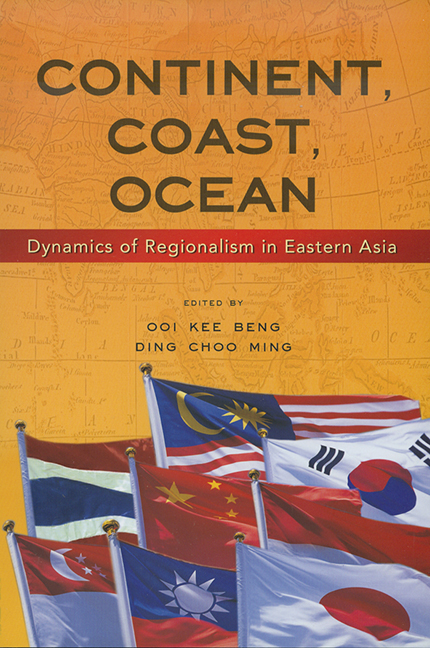Book contents
- Frontmatter
- Contents
- Foreword by Shamsul A.B.
- Contributors
- Introduction
- PART ONE PUTTING JAPANESE IMPERIAL HISTORY TO REST
- PART TWO THE ECONOMICS OF REGIONAL INTEGRATION
- PART THREE INTER-REGIONALISM AND REGIONALISM
- 5 Alliance and Arms: A Study of the Change in U.S. Arms Transfer to East Asian Allies, 1950–2001
- 6 A Multicultural European Union and Its Implications for Asia
- 7 The Future Prospects of Multilateralism in Southeast and East Asia
- 8 The Historical and Cultural Legacy of Relations between Southeast Asia and East Asia, with Special Reference to Malaysia
- PART FOUR NEW KNOWLEDGE, NEW PROBLEMS, NEW SOLUTIONS
- Index
5 - Alliance and Arms: A Study of the Change in U.S. Arms Transfer to East Asian Allies, 1950–2001
from PART THREE - INTER-REGIONALISM AND REGIONALISM
Published online by Cambridge University Press: 21 October 2015
- Frontmatter
- Contents
- Foreword by Shamsul A.B.
- Contributors
- Introduction
- PART ONE PUTTING JAPANESE IMPERIAL HISTORY TO REST
- PART TWO THE ECONOMICS OF REGIONAL INTEGRATION
- PART THREE INTER-REGIONALISM AND REGIONALISM
- 5 Alliance and Arms: A Study of the Change in U.S. Arms Transfer to East Asian Allies, 1950–2001
- 6 A Multicultural European Union and Its Implications for Asia
- 7 The Future Prospects of Multilateralism in Southeast and East Asia
- 8 The Historical and Cultural Legacy of Relations between Southeast Asia and East Asia, with Special Reference to Malaysia
- PART FOUR NEW KNOWLEDGE, NEW PROBLEMS, NEW SOLUTIONS
- Index
Summary
INTRODUCTION
In the fall of 1949, the American Congress passed the Mutual Defence Assistance Act that led to a programme commonly known as “security assistance”. In accordance with this act (and later revisions), the United States came to export almost US$500 billion in arms and related military services from 1950 to 2001. The transfer of military equipment to allies and friendly states has remained a consistent feature of U.S. foreign policy, although there was a significant change in how arms were supplied. The United States provided arms free of charge in the beginning, but gradually began to demand payment. In other words, there was a shift from military aid to military sales (the aid/sale transformation). The transition was remarkable: in 1950, for example, only 4 per cent of the total agreements on weapons exports were sales; but in 1984, military sales accounted for more than 90 per cent of all U.S. arms exports. Even after the Cold War, this percentage was never lower than 63 per cent. The purpose of this study is to develop a consistent explanation of this increase in the percentage of arms sales, after which the data is tested on the case of U.S. arms exports to East Asia.
World Military Expenditures and Arms Transfer (WMEAT), one of the most cited and commonly used statistical sources, defines “arms transfers” as follows:
Arms transfers (arms imports and exports) represent the international transfer (under terms of grant, credit, barter or cash) of military equipment, usually referred to as “conventional”, including weapons of war, parts thereof, ammunition, support equipment, and other commodities designed for military use.
This involves two important features. First, arms transfer is an “international” activity between at least two states or international actors. In other words, arms transfer involves cooperation between states, and requires a supplier to export arms and a recipient to import them. If either the supplier or the recipient is not capable or not willing to cooperate, no arms transfer can occur.
This chapter contends that U.S. arms transfers cannot be adequately studied by examining the supplier side alone. The supplier and the recipient are equally important in understanding the pattern of U.S. arms transfer.
- Type
- Chapter
- Information
- Continent, Coast, OceanDynamics of Regionalism in Eastern Asia, pp. 105 - 130Publisher: ISEAS–Yusof Ishak InstitutePrint publication year: 2007



